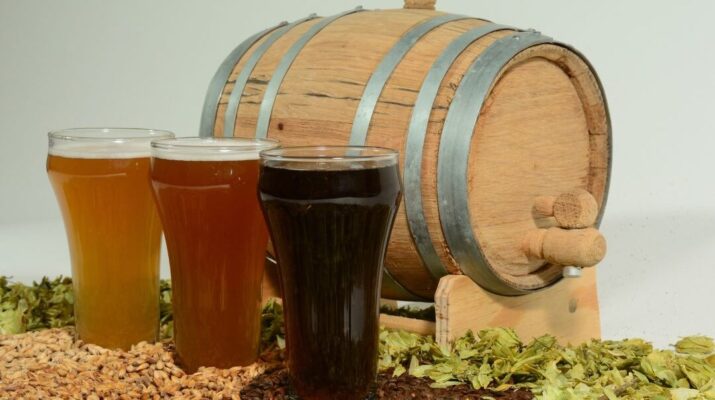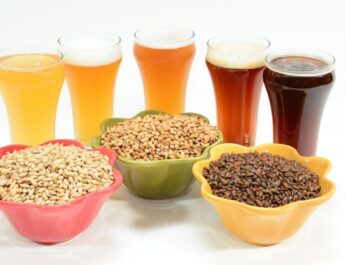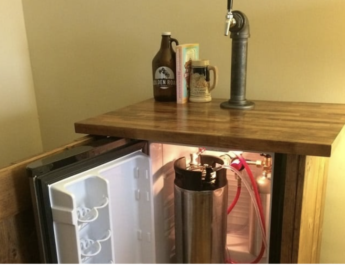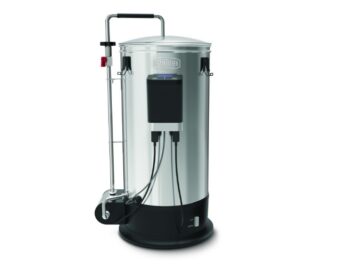Home brewing is not all about beer! Let’s take a look at what else you can brew at home, how to do it successfully and storing your home brew.
Introduction
When most people think about home brewing, the first thing that comes to mind is brewing beer. And while homebrewing beer is a popular and enjoyable activity, you can also homebrew wine, cider, mead and other types of alcoholic beverages.
On this blog, we discuss the basics of homebrewing and provide an overview of the different types of alcohol that you can make at home. We also discuss and review the equipment you’ll need to get started, as well as provide recipes, and look at the brewing process, so you know exactly how to make (and how long it takes to produce!) a batch of homebrewed booze. So whether you’re a beer lover or a wine aficionado, read on for everything you need to know about home brewing!
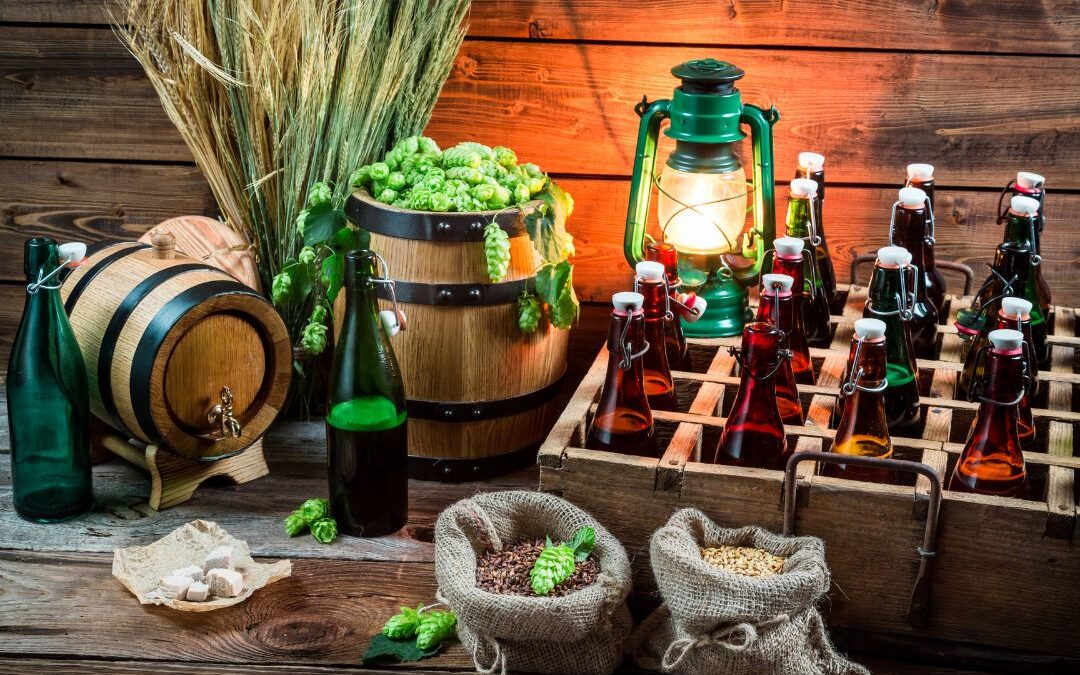
What is home brewing?
Homebrewing is the process of making alcohol at home using fermentation. Fermentation1 is a natural process that occurs when yeast breaks down sugars in food, which produces alcohol and carbon dioxide. Homebrewing can be traced back to ancient times, and today it is a popular hobby for many people around the world.
“When making alcoholic beverages like beer, wine, and mead, the alcohol itself is the desired end product. Here, yeast are encouraged to undergo alcoholic fermentation in vats and barrels by being fed large amounts of sugars. The CO2 is allowed to be released and evaporated, but the ethanol product is retained, creating an alcoholic drink.”
Elizabeth Schap – study.com3
What do you need to start home brewing?
There are a few homebrew supplies you’ll need to get started with homebrewing. First, you’ll need a fermenting vessel, such as a carboy or bucket. You’ll also need some homebrewing equipment, like a brewing kettle, mixer and an airlock.
You will need water (tap water will do, but many people like to filter their water as the mineral content does influence brew chemistry and flavour), as well as your homebrew ingredients:
- Grapes for wine
- Honey for mead
- Juice for cider, and of course
- Hops and Barely or a brew bag/can for beer).
Finally, you’ll need yeast, which you can either find or grow yourself, or purchase from a local homebrew store.
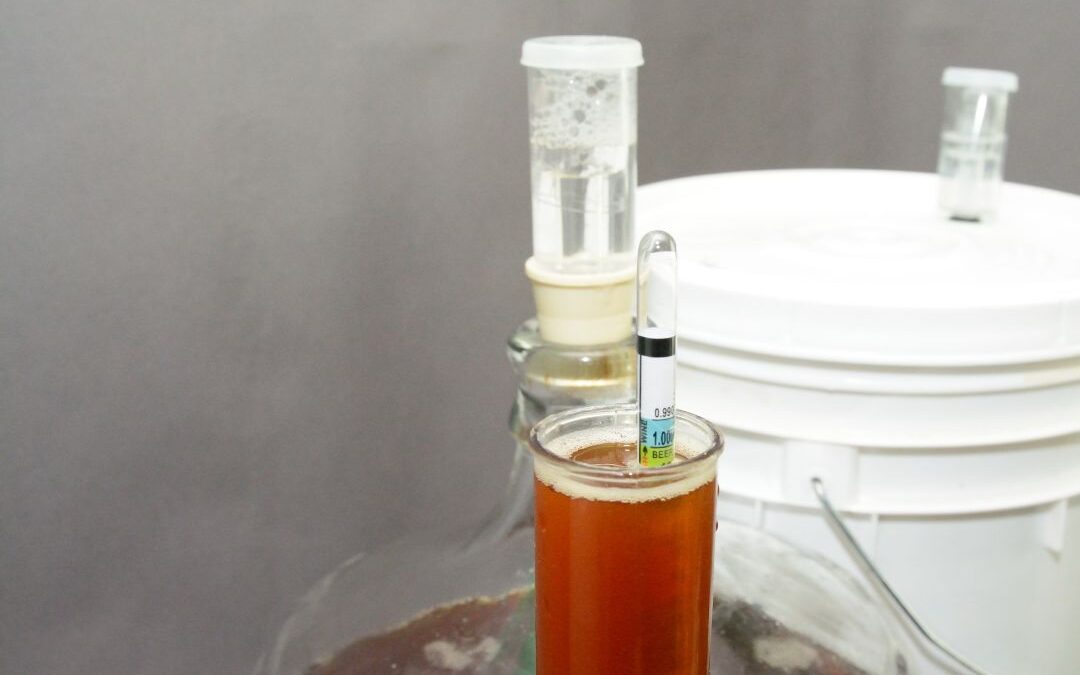
The type of alcohol you homebrew will also dictate the type of equipment you need. For example, if you’re planning on making different beer styles, you’ll need a brewing kit that includes a mash tun and a bottling bucket. If you’re interested in making wine, on the other hand, you’ll need a wine kit that comes with a primary fermenter and a secondary fermenter.
How long does the home brewing process take?
The amount of time it takes to homebrew2 depends on the type of alcohol you’re making. To brew beer, for example, typically takes between two and four weeks to brew, while wine can take anywhere from four weeks to several months. Cider and mead are somewhere in between, taking around two to four weeks each.
The fermentation process is the longest part of homebrewing, as it can take anywhere from a few days to several weeks for the yeast to eat all the sugars and turn them into alcohol. Once fermentation is complete, you’ll need to bottle or keg your homebrew and let it age for at least a few weeks (though it’s worth noting that many homebrews, like hoppy beer, are best enjoyed after only a few weeks of ageing).
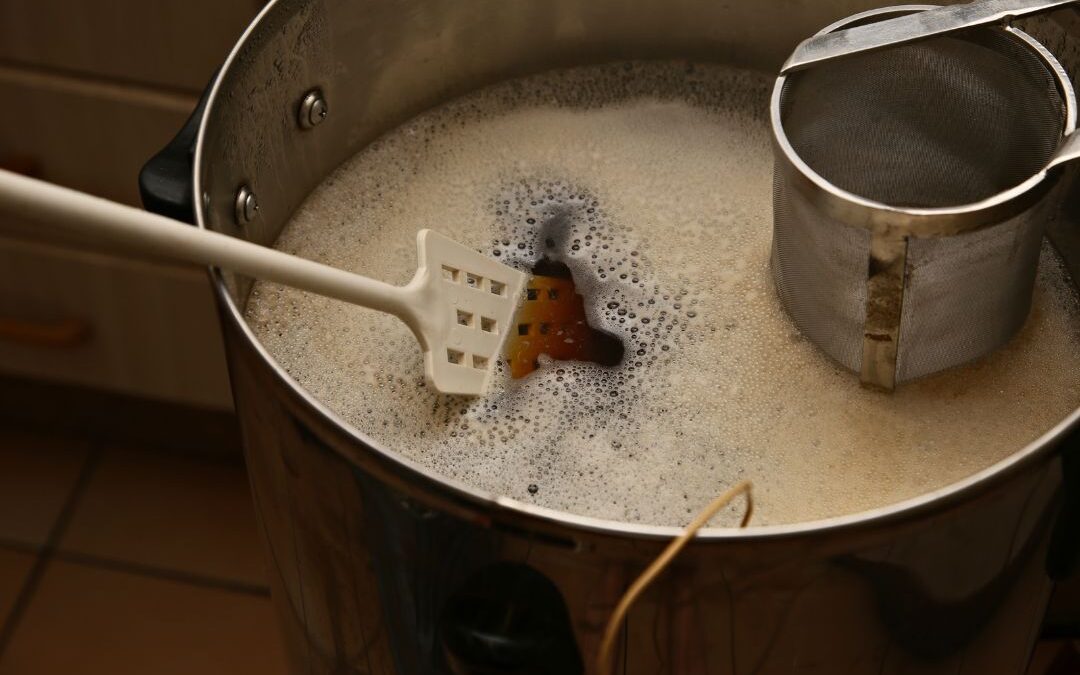
What are the basics of fermentation?
As we mentioned, fermentation is a natural process that occurs when yeast breaks down sugars in food. This process produces alcohol and carbon dioxide.
The key to successful fermentation3 is to create an environment that is conducive to yeast growth, while also preventing the growth of harmful bacteria. This can be accomplished by keeping your fermenting vessel clean and sterilized, as well as using a quality yeast strain.
It’s also important to monitor the temperature of your fermentation, as different types of yeast prefer different temperatures. For example, most ale yeast strains prefer a temperature between 68-72 degrees Fahrenheit, while lager yeast strains prefer a cooler temperature, around 55 degrees Fahrenheit.
Finally, you’ll need to add sugar to your homebrew4 in order to feed the yeast and encourage fermentation. The amount of sugar you’ll need will depend on the type of alcohol you’re making, as well as the specific gravity of your homebrew.
The specific gravity is a measure of the density of your homebrew compared to water. It’s important to monitor the specific gravity during fermentation, as it will give you an indication of how much alcohol has been produced – and basically, how strong your alcoholic beverage will be!
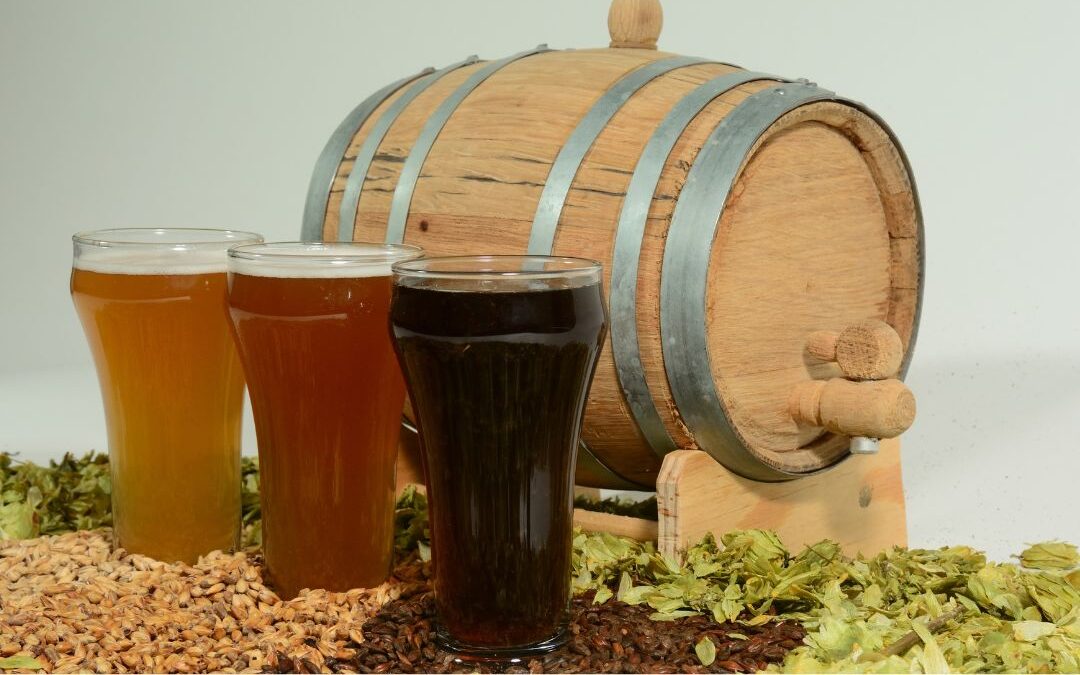
“Over the course of human history, and using a system of trial, error, and careful observation, different cultures began producing fermented beverages.”
Luisa Alba-Lois, Ph.D. & Claudia Segal-Kischinevzky, M.Sc. – nature.com1
How do you store your homebrew5?
Once you’ve bottled or kegged your homebrew, it’s important to store it at the proper temperature, ideally in a cool, dark place. This will help to prevent the growth of harmful bacteria and keep your homebrew tasting its best.
If you’re storing homebrew beer, we recommend keeping it in a fridge or cellar. If you’re storing wine or cider, on the other hand, you can keep it in a cupboard or closet.
Mead is a bit different, as it can be stored like wine or cider, but many people also like to age it for several months (or even years) before drinking. This allows the flavour of the mead to develop and mature over time.

How can you improve the quality of your homebrew?
There are a few simple things you can do to improve the quality of your homebrew. First, make sure you’re using high-quality ingredients – this includes things like malt, hops, yeast, and water.
Second, be sure to follow the beer recipes or other homebrew recipes closely. This may seem like a no-brainer, but it’s important to remember that homebrewing is a science, and even small deviations from the recipe can have a big impact on the final product.
Third, take good care of your homebrewing equipment. This means regularly cleaning and sterilizing all of your brewing gear, as well as storing it properly when you’re not using it.
Finally, be patient! Homebrew takes time and patience to make, so don’t rush the process. Give your homebrew the time it needs to ferment and age properly, and we promise it will be worth the wait.
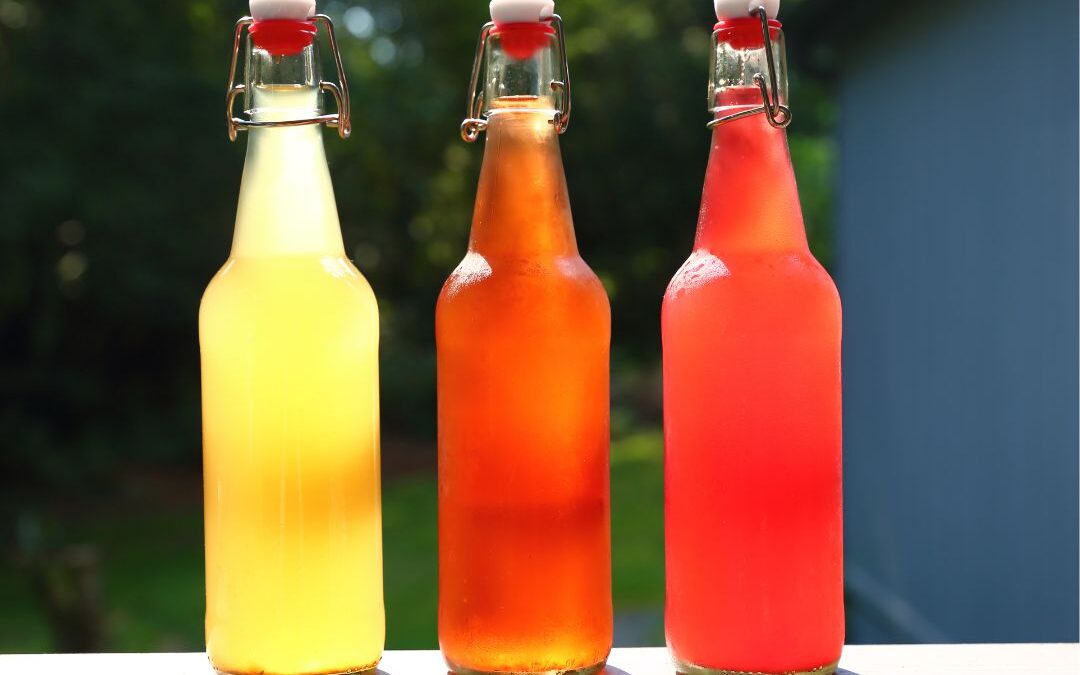
Conclusion
Brewing your own beer or other alcoholic beverages can be very satisfying, and a great conversation starter when offering your brew to family and friends! Just make sure you follow recipes carefully, keep your processes and your equipment hygienic, and most of all, have fun with it!
Cheers!
Now that you know the basics of homebrewing, it’s time to get started!
Have you ever experimented with making beer? How did you go? Let us know in the comments!
Reference List:
- ‘Yeast Fermentation and the Making of Beer and Wine’, Luisa Alba-Lois, Ph.D. & Claudia Segal-Kischinevzky, M.Sc., Scitable, Published: 2010. Accessed online at https://www.nature.com/scitable/topicpage/yeast-fermentation-and-the-making-of-beer-14372813/ on Sep 18, 2022.
- ‘How Long Does It Take to Make Beer?’, David Ackley, Adventures in Homebrewing, Accessed online at https://blog.homebrewing.org/how-long-does-it-take-to-make-beer/ on Sep 18, 2022.
- ‘What is Alcoholic Fermentation?’, Elizabeth Schap, Study.com. Accessed online at https://study.com/academy/lesson/alcohol-fermentation-definition-equation-process.html on Sep 18, 2022.
- ‘Sugar Additions Homebrew : When and Why’, More Beer!, Accessed online at https://www.morebeer.com/questions/207 on Sep 18, 2022.
- ‘The Impact of Storage Temperature on Beer’, American Homebrewers Association, Accessed online at https://www.homebrewersassociation.org/how-to-brew/impact-storage-temperature-beer/ on Sep 18, 2022.

